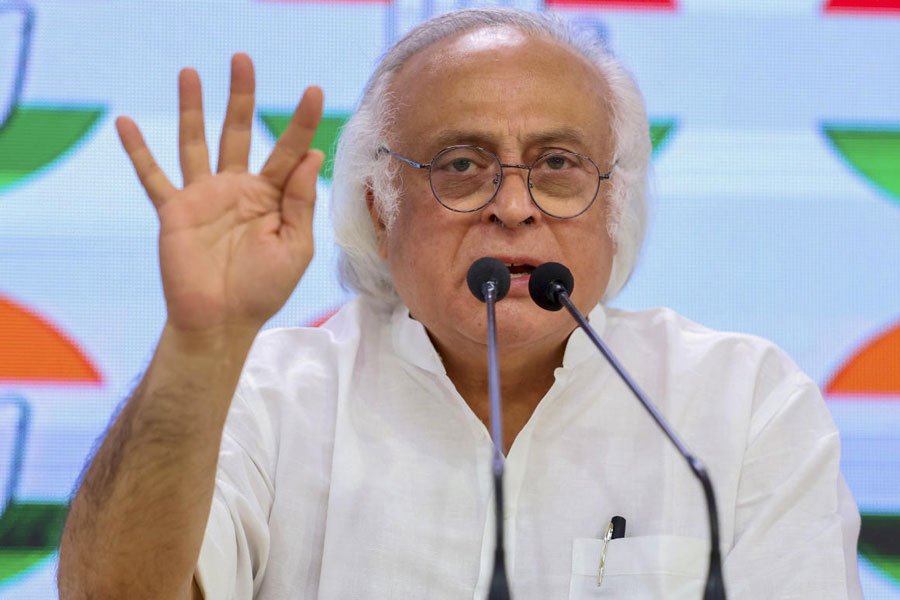 |
| Bush food desserts: Davidson plum sorbet, wattleseed pavlova and macadamia biscotti at Ochre Restaurant, Queensland |
A few weeks back, I wrote about my mission to find “Australian food” Down Under, only to discover that everything from Irish to Spanish to Japanese, from roo steak to rogan josh to risotto was “Australian” in this multicultural island country. But I did find something that was uniquely Australian — bush tucker, the food of the Aboriginal people of Australia. Unable to find much bush food on restaurant menus or in home-cooked meals, I landed up at the doorstep of the biggest voice in the indigenous food scene — chef Mark Olive.
Also known as The Black Olive, Mark is as big and burly as he is gentle and sweet. A familiar face on TV, he became “world-famous” after he catered for the 2006 Commonwealth Games in Melbourne. His India connection? Well, he loves to cook a “beautiful tandoori crocodile and naan bread”!
It took Mark the better part of an afternoon to compress 60,000 years of Aboriginal food history for me, sitting in his Melbourne office.
Aboriginals are the people who inhabited Australia before the Europeans colonised it from the late 1700s. “We’re the only country that eats our coat of arms! The kangaroo and emu are on Australia’s coat of arms,” grinned Mark as I settled in for a sumptuous story.
“Non-indigenous Australia looks at that as a bad thing. But for the Aboriginal people, this was never their coat of arms, these animals were a viable means of clothing, food… part of their Dreamtime stories… the bones were used for needles... the animal was used totally, and by the entire tribe,” said Mark.
Dreamtime stories are the tales of the origin of the world and man as told by the elders, each community having its own version. Between 360 and 400 communities have been identified among the Aboriginal population, some of them as small as 50-100 people.
Speaking about the culinary scene in Australia, Mark insisted that bush tucker “should be called our national cuisine. But we’ve embraced every other culture in this country except our own.”
 |
| Green ant |
Bush basics
Bush food is the naturally available food that the indigenous people of Australia have gathered and lived on for 60,000 years. Just like the forest produce gathered by the nomadic tribal population of India, bush food includes leaves, fruits, berries, nuts, herbs and salts. Bush meats include kangaroo, emu, possum, crocodile, fish and bugs. These foods are usually extremely nutritious and often have medicinal properties, like the desert quandong (very tart but a huge source of vitamin C). Many have spiritual significance, like the green ants (again, a source of vitamin C, but if the ants don’t bite an ailing person, the Tjapukai people believe the person is dying). Some are toxic if consumed raw (like warrigal greens) and need to be boiled or left in a flowing stream overnight for the toxins to leach out.
Some famous bush foods are lemon myrtle, which is now available in everything — essences to ice cream, jams to soaps — wattleseed, which is being used in all kinds of non-indigenous dishes, from breads and biscuits to desserts like pavlova, and of course, macadamia nuts.
As Australia became a European outpost, the settlers didn’t quite take to its bush food. In fact, the opposite happened — the natives started adopting a non-indigenous diet.
Stolen generation
Born in 1962 in Wollongong, New South Wales, Mark belongs to the Bundjalung people. Though born in a city hospital, Mark didn’t have a birth certificate until 1970. That’s because Aboriginal people were not counted as “people” till as late as 1967. They were “wards of the state”.
“And the stolen generations went up to the mid-1980s. They were still taking children and placing them in foster homes. So, we still have to deal with a generation of stolen kids in this country that are in their mid-20s,” Mark pointed out.
“Stolen generations” is a dark chapter in the history of Australia that started in the first decade of the 1900s, where governments and churches would take away Aboriginal and Torres Strait Islander babies from their parents in order to raise them “safely”.
But we digress, this is after all a chat about food.
Mark was, however, telling me all this for a reason. That bush tucker doesn’t really feature in mainstream Australian culinary culture — except in specially designed touristy meals — is because Australia’s indigenous people don’t really feature in Australia’s everyday life.
It would, however, be wrong to say that bush food is completely absent. Thanks to Mark’s regular appearance on TV, other chefs started taking notice of indigenous ingredients around 10 years back.
“I don’t want to brag. But it wasn’t really till I featured bush food on television, which was 2000-01. Earlier, people were working with indigenous food but they struggled to get them off the ground. People started taking notice after they saw it on television,” smiled Mark.
In 1996, Mark had started a restaurant in Sydney called The Midden, (“the kitchen” in his language), which featured indigenous ingredients. The restaurant remained open for just 18 months. “It was way ahead of its time,” Mark conceded, adding that even today, a restaurant dedicated just to bush food would be very hard to run.
Some haven’t been exposed to bush food, some are too scared to try, or don’t know how to cook it. So his mission is to educate people, to put bush food “out there”.
 |
| Possum |
From wild to farm
But with chefs, restaurants and experimental eaters showing an interest in bush tucker, some indigenous people are exploring the option of growing their native foods commercially.
“They’re not only growing the herbs and fruits (for business), they’re also incorporating them into their diets and introducing their kids to their native food, getting them off McDonald’s or their sugary drinks. That’s fantastic because it’s giving the community a health outlook,” said Mark.
He is associated with the Bush Food Association and The Outback Pride Project, which works directly with different indigenous communities across Australia to grow, package and market bush products.
Today there are also bush meat farms. Kangaroo meat for human consumption was legalised in the 1980s and is easily available and affordable at supermarkets. There’s a wallaby farm and a possum farm in Tasmania and a croc farm in northern Queensland. But much of the meat is exported.
Stuck on Skippy
Mark has a theory about why bush meats find so few takers in Australia. “It’s the way we think about it in this country. When we go to the butcher, we don’t say give me a kilo of sheep, pig or cow, we ask for lamb, pork or beef. So you are actually disassociating yourself from the animal. When you think of going and asking for a kilo of kangaroo, you instantly think of Skippy,” said Mark, referring to a hugely popular TV series in Australia about a little boy and his pet kangaroo, Skippy.
“But what we’ve got to remember is Skippy is very yummy, is very good for you and is one of the best meats in the world!”
Though Mark is happy with the progress, he’s wary of non-indigenous companies selling products that are “bush food” just in name.
 |
| Kutjera or desert raisin |
“Non-indigenous people are utilising the bush herbs but only putting a very small percentage in the actual product. With an Outback Pride product, 70 per cent of what’s in a bottle of sauce is bush food. An Outback Pride dried herb is 100 per cent from the bush. It’s not watered down with things like almond, flour, salt — and then they call it mountain pepper!”
Mark feels that since it’s a very young industry, it isn’t regulated properly, so a lot of people are getting away with tampering with bush food. “Basically that’s where I come in. I say no, this is what it looks like, what it tastes like. I don’t want people to get used to a taste of bush food that is not true,” he is very clear.
Lessons for India
I tell him about the tribal population of India, who number over 100 million but don’t feature in the everyday life of urban India either. In 2011, the government of India allowed tribals to use nearly 60 per cent of their ancestral land for gathering activities. Some corporations like ITC, Dabur and Emami had shown an interest in collaborating with tribal self-help groups to process, package and sell the forest produce. But things haven’t taken off. I asked Mark if he had any advice.
“See, wattleseed and lemon myrtle were the only bush foods being used by chefs and home cooks initially because those were the only herbs you could get commercially on a constant basis. For the others, one had to rely on wild harvest. But wild harvest can be unpredictable, so it becomes an unsustainable business model.”
Today indigenous communities have started plantations and commercial farming of a host of bush foods. Quandongs will be the next big thing, predicted Mark. Then there are farms of kutjera or desert raisin, aniseed myrtle, passionberry, desert lime, bush cucumber, marsdenia or bush banana and much more.
“I’ve been a chef for 30 years, working with bush food for over 25, and it’s only now that it’s starting to take its place in the culinary ladder in this country. Another five years and it’s going to be even more exciting.
Are the master chefs of India listening?










